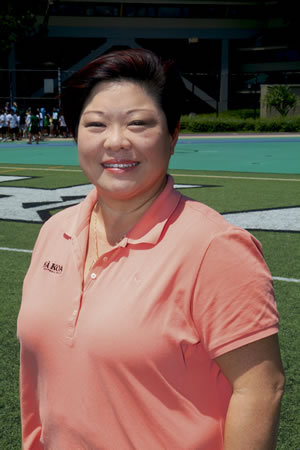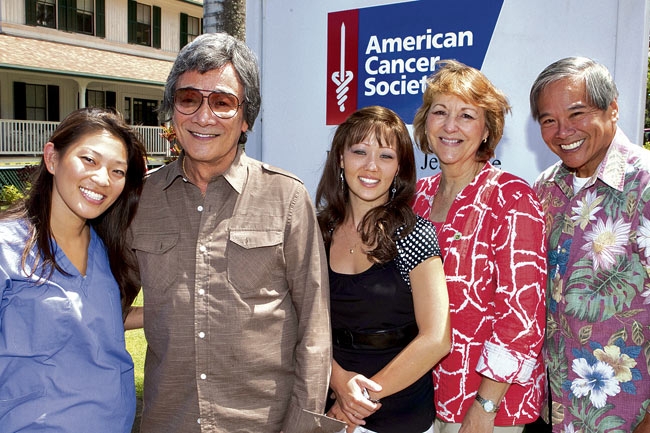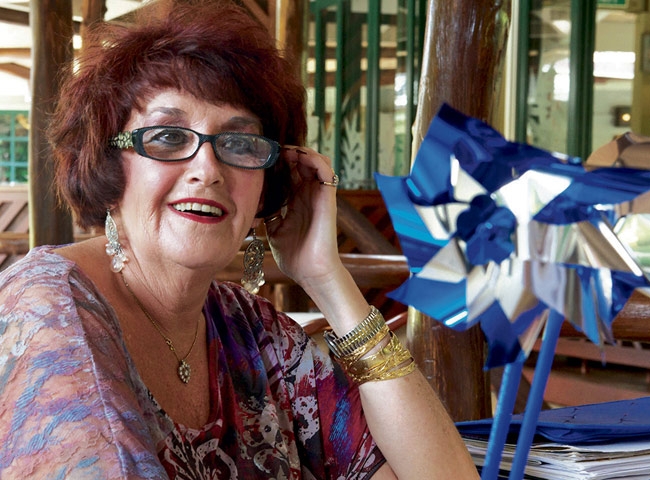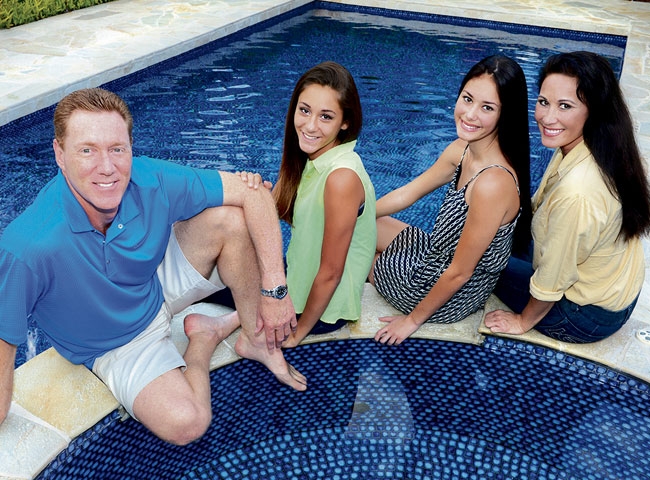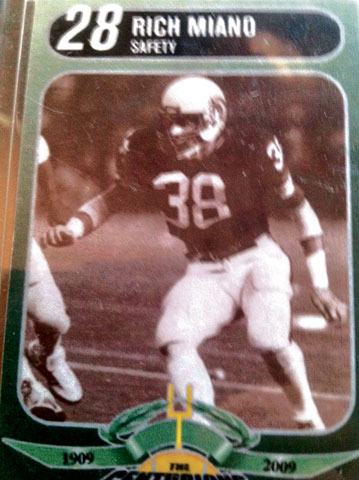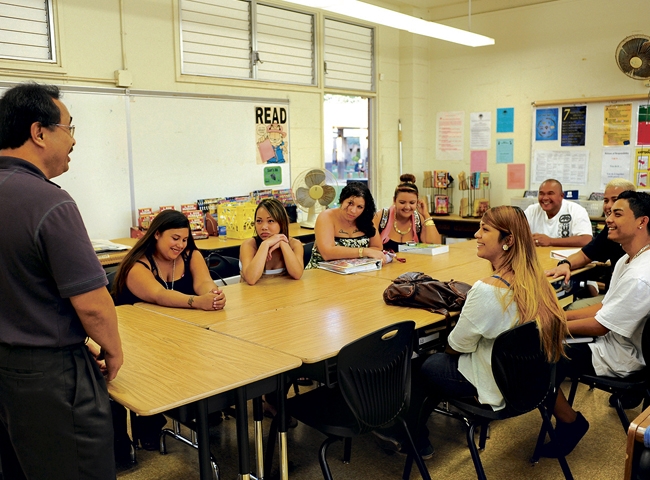Na Koa Football Club supports the UH football team beyond funds received from the university. And with a new coach, new members also are needed
The reason those top tier college football teams – the Alabamas, Ohio States, even the boys from Boise – are in the top 25 rankings each year has as much to do with their play as it does with the support they receive on and off the field.
Brought in to fulfill the supplemental needs each player deserves as a scholarship member of the UH Warrior football team, Na Koa Football Club executive director Kim Fujiuchi finds her position thrilling, and is embracing her first six months on the job and looking forward all the time.
“I never thought fundraising would be my real job. The past eight to 10 years I have been involved in charity work. This seemed like a neat way to put together the fundraising I had been doing as a volunteer with my passion for football,” says Fujiuchi, who since 2004 has worked on a volunteer basis as chairwoman of the Sheraton Hawaii Bowl Charity Angels, helping to raise close to $500,000 for the bowl game’s charities. Coming into her position, high on Fujiuchi’s to-do list was giving fans and the public a better understanding of what Na Koa Football Club does, and why it is important to donate and support a football team the fans want to see excel each season.
“One of our major initiatives is to really educate the public about the difference between Na Koa and other clubs like Ahahui Koa Anuenue (UH’s official athletic fundraising organization). When you buy tickets to football games, you’ve supported the athletic department, which is great, but you have not necessarily directly supported the football program,” Fujiuchi says.
As a numbers-based booster organization, Na Koa is tasked with the responsibilities of raising funds for all of the expenses that cannot be supported through the university and athletic department’s budget. One of the major costs that Na Koa works to finance is tuition for summer school, an area of high importance for new football head coach Norm Chow.
“Student athletics is an opportunity to play sports, but it more importantly is to ensure these players get a good education. It is one of the largest projects we undertake to support the football team,” says Fujiuchi. “It keeps players eligible, helps them graduate on time, and now the NCAA is really measuring everyone on graduation rates and academic process. Summer school is almost a quarter of a million dollars, and most comes from the Waterhouse Charitable Trust, but Na Koa is tasked with raising the rest, which can be $70,000 to $80,000 per year.”
As a football-specific booster club, Na Koa hosts a variety of events to raise money and awareness about the football program and the club. They want the community to have a relationship with the coaches and players. This past February, Na Koa coordinated a National Letter of Intent Signing Day Dinner, which not only introduced fans to Coach Chow and his staff, but also gave them an in-depth look at high school players who have committed to playing for the Warriors.
“For the die-hard football junkies, this is where you get the scoop on these new kids. It was a great success and should become one of our pillar events,” adds Fujiuchi, who has been a UH football season ticket-holder for more than 10 years.
Other projects Na Koa has been coordinating to help the cause include its annual Ed Wong Golf Tournament, a new mailing campaign that started this past December that raised close to $6,000, as well as its upcoming telethon, titled Na Koa Presents: An Evening with Coach Chow and His Staff: Let’s Do This Together, which will air April 18 from 7 to 10 p.m. on KFVE.
“This telethon should stir a buzz about Coach Chow and all these guys who have gone out, done great things and have now come home,” says Fujiuchi. “We want this to be very interactive and conversational. Fans will be able to call in, ask questions and donate. We’ll have former players manning the phones too.”
Seeking to broaden the Na Koa membership beyond the already dedicated fan, Fujiuchi and Na Koa volunteers are creating plans to get younger generations and women more involved with the state of their Warrior football nation.
“We are working toward raising $1.25 million in the next two years. I am one of those goal-oriented people who wants to have it done yesterday, but the reality is we have to put things in place, making sure we are as efficient as possible,” says Fujiuchi, who wants to effectively turn people’s passion for football into support for the team.
Membership fees as a Na Koa supporter start at $20 as a Kako’o member and can be topped off at $5,000 as an Ali’i Chief member.
For more information about Na Koa or how to become a member, visit nakoa.org.
Bottom line: If you want to run with the top Tides, Buckeyes or Broncos each year, it’s going to take more than enthusiastic post-touchdown applause.
